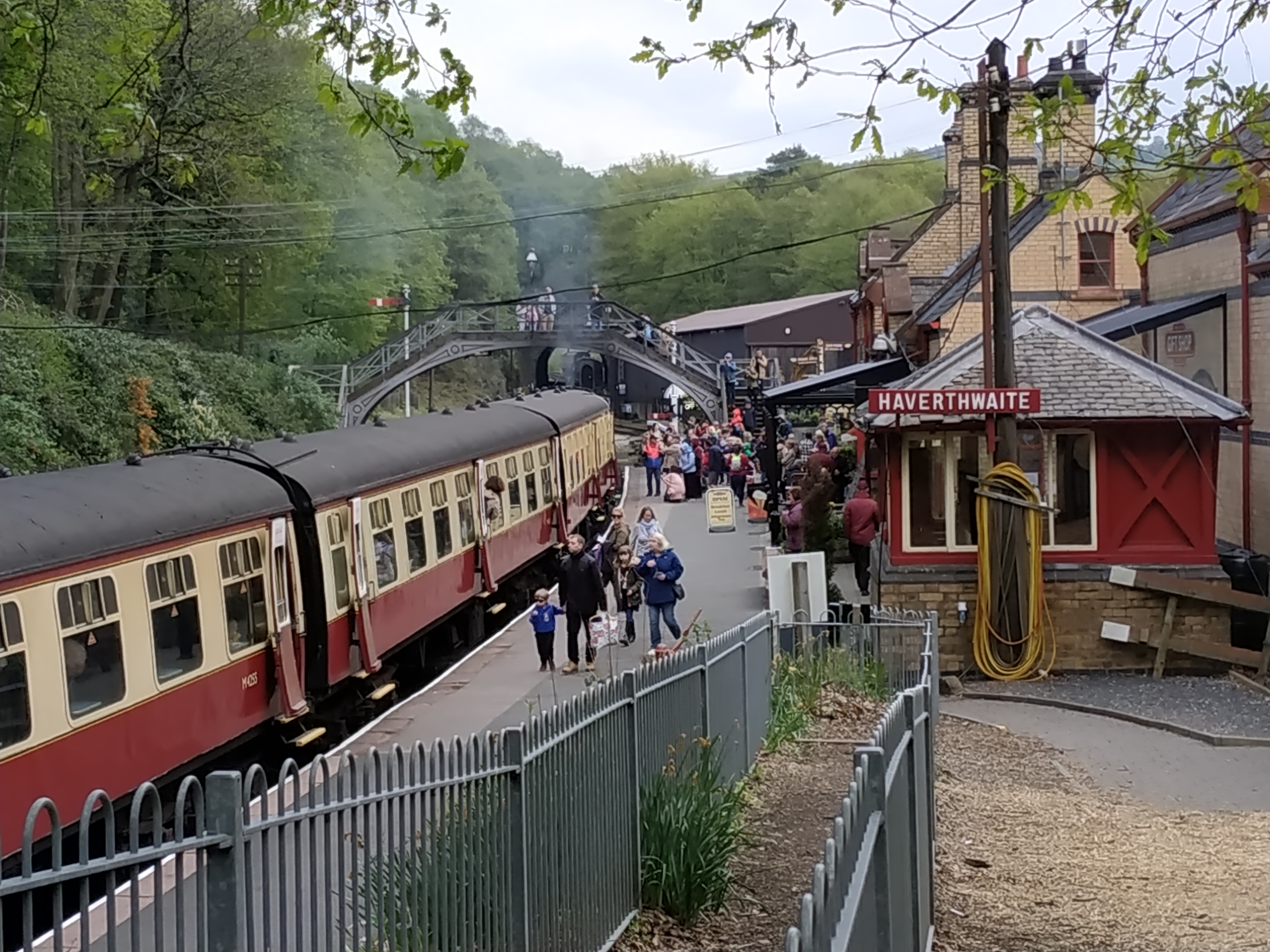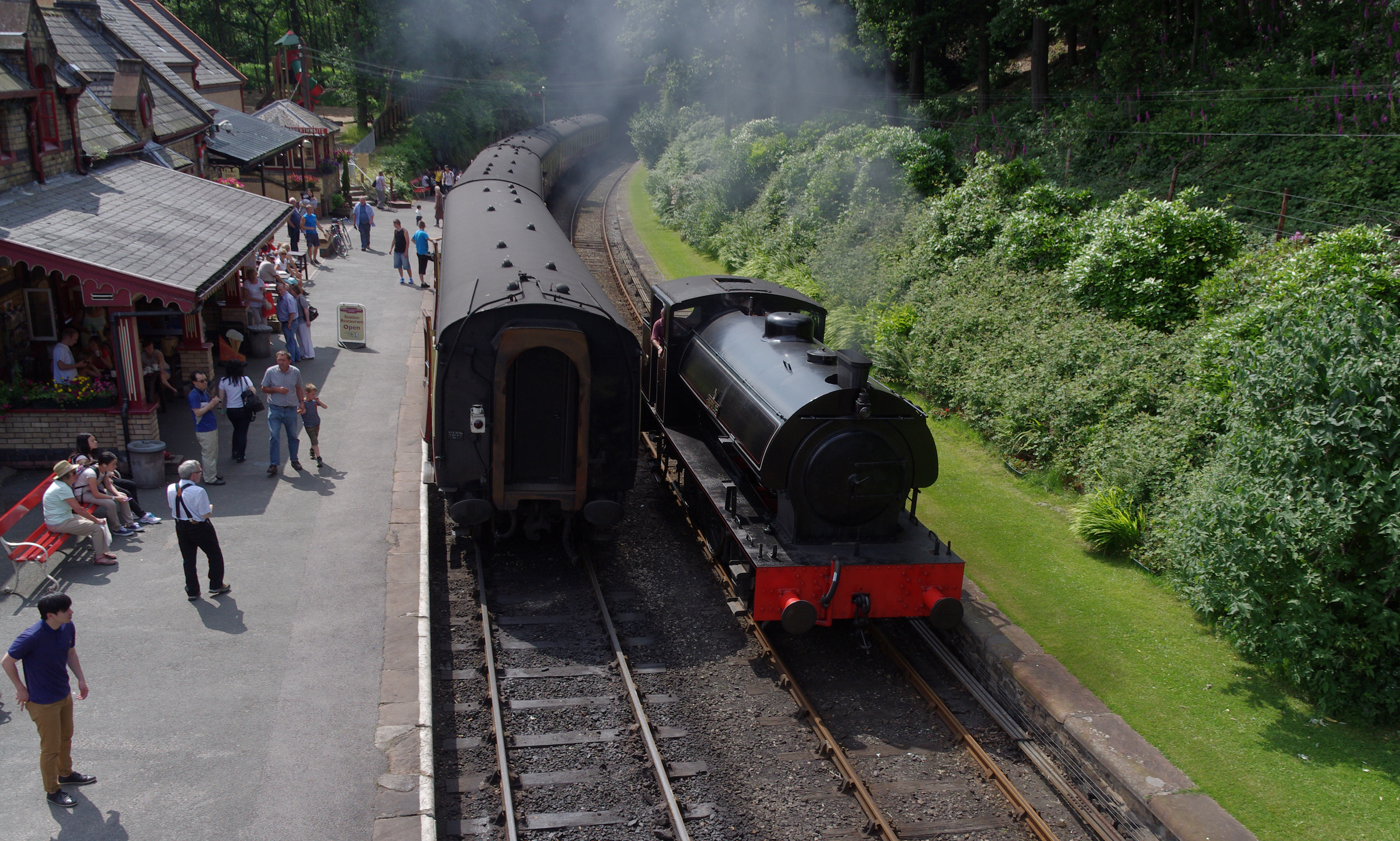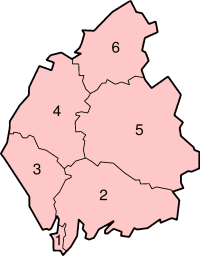|
Haverthwaite
Haverthwaite is a small village and civil parish in the Furness region of Cumbria, England. It is also within the boundaries of the Lake District National Park. It is located several miles east of Ulverston and is near the southern end of Windermere. In the 2001 census the parish had a population of 728, increasing at the 2011 census to 797. The village gets part of its name from the Old Norse word '' thwaite'' which usually refers to a clearing or settlement in the forest. History The village was originally a Viking settlement, but it has been suggested that there may have been a settlement of sorts there before the Vikings arrived. In the 18th century there were two iron furnaces near the village, one at Backbarrow and the other at Low Wood. The furnace at Backbarrow was supplied from 1711 with iron ore from Low Furness which would have arrived at the quays in Haverthwaite and been transported to Backbarrow by horse and cart. In 1860 the Furness Railway opened its bran ... [...More Info...] [...Related Items...] OR: [Wikipedia] [Google] [Baidu] |
Listed Buildings In Haverthwaite
Haverthwaite is a civil parish in the South Lakeland District of Cumbria, England. It contains ten listed buildings that are recorded in the National Heritage List for England. Of these, one is listed at Grade II*, the middle of the three grades, and the others are at Grade II, the lowest grade. The parish is in the Lake District National Park. It contains the villages of Haverthwaite and Backbarrow, and is otherwise mainly rural. A surviving building from its industrial past is a former saltpetre refinery A refinery is a production facility composed of a group of chemical engineering unit processes and unit operations refining certain materials or converting raw material into products of value. Types of refineries Different types of refineries ... for a gunpowder factory. The other listed buildings include houses and associated structures, farm buildings, bridges, a war memorial, and a church. __NOTOC__ Key Buildings References Citations Source ... [...More Info...] [...Related Items...] OR: [Wikipedia] [Google] [Baidu] |
Lakeside & Haverthwaite Railway
The Lakeside and Haverthwaite Railway (L&HR) is a heritage railway in Cumbria, England. Location The L&HR runs from Haverthwaite at the southern end of the line via Newby Bridge to Lakeside at the southern end of Windermere. Some services are timed to connect with sailings of the diesel excursion vessels or steam vessels on Windermere, sailing from Lakeside to Bowness and Ambleside. Furness Railway operation of the branch line The railway is a former branch line of the Furness Railway (FR) and was opened on 1 June 1869. The line was served by local passenger trains which started their journey at Ulverston on the FR's mainline from Carnforth to Barrow-in-Furness. The FR branch trains travelled east to the triangular junction at Plumpton and then turned north via Greenodd and on to stations at Haverthwaite, Newby Bridge halt and Lakeside. The FR's weekdays passenger service in July 1922 comprised eight trains in each direction. There were advertised train-to-boat connections t ... [...More Info...] [...Related Items...] OR: [Wikipedia] [Google] [Baidu] |
Haverthwaite
Haverthwaite is a small village and civil parish in the Furness region of Cumbria, England. It is also within the boundaries of the Lake District National Park. It is located several miles east of Ulverston and is near the southern end of Windermere. In the 2001 census the parish had a population of 728, increasing at the 2011 census to 797. The village gets part of its name from the Old Norse word '' thwaite'' which usually refers to a clearing or settlement in the forest. History The village was originally a Viking settlement, but it has been suggested that there may have been a settlement of sorts there before the Vikings arrived. In the 18th century there were two iron furnaces near the village, one at Backbarrow and the other at Low Wood. The furnace at Backbarrow was supplied from 1711 with iron ore from Low Furness which would have arrived at the quays in Haverthwaite and been transported to Backbarrow by horse and cart. In 1860 the Furness Railway opened its bran ... [...More Info...] [...Related Items...] OR: [Wikipedia] [Google] [Baidu] |
Backbarrow
Backbarrow is a village in the Lake District National Park in England. It lies on the River Leven about 5 miles (8 km) northeast of Ulverston in Furness in the county of Cumbria. History Backbarrow probably grew during the Elizabethan period, due to the corn mills that were built along the river. Earlier mills at the site had been owned by Furness Abbey, which by this time had been dissolved. Development increased due to the iron furnace that was built in Backbarrow in 1711. The furnace has been described as the first efficient blast furnace. The cotton mills continued to grow in size during the Victorian period. In 1868 an extension of the Furness Railway was built through the village to transport iron and products from the mills. Though the line was closed in the 1960s with the demise of the ironworks, the section from Haverthwaite to Lakeside, which passes through Backbarrow, remains open as a heritage railway (see Lakeside and Haverthwaite Railway). Backbarrow wa ... [...More Info...] [...Related Items...] OR: [Wikipedia] [Google] [Baidu] |
River Leven, Cumbria
The River Leven (pron. ) is a short river in the ceremonial county of Cumbria, falling within the historic boundaries of Lancashire. It drains Windermere from its southernmost point and flows for approximately into the northern reaches of Morecambe Bay. The river and its estuary are the boundary between the Cartmel Peninsula and Furness Peninsula and is part of North Lonsdale, also known as Lancashire North of the Sands. The upriver limit of tidal flow is close to the village of Haverthwaite. Also at this point is to be found Low Wood Bridge which, until the coming of the railways, was the first bridging point across the river. The Leven is navigable upstream as far as Low Wood, and downstream from Windermere to Newby Bridge. Apart from Newby Bridge and Haverthwaite, the only other settlements on the Leven are the villages of Backbarrow and Greenodd. The river's steep fall around Backbarrow allowed industrial use of the river for the ultramarine mill and also a small hydroe ... [...More Info...] [...Related Items...] OR: [Wikipedia] [Google] [Baidu] |
Lakeside, Cumbria
Lakeside is a village at the south end of Windermere, England. Now in the county of Cumbria, before county reorganisation of 1974 it was in Lancashire, as part of the region known as Furness. It was established as a steamer pier for services along the lake when the Lakeside branch of the Furness Railway reached it in 1869, meaning that steamer services no longer had to negotiate the River Leven to Newby Bridge. Also built at Lakeside was a hotel to serve the tourists brought by the railway and steamers. The steamers still call at Lakeside and the railway is now a steam-hauled heritage railway, operated as the Lakeside & Haverthwaite Railway. However, it now only operates as far as Haverthwaite, with the route beyond to Ulverston closed in 1965 as part of the Beeching cuts. It now contains the Aquarium of the Lakes, an aquarium featuring fish found in the rivers and seas around the Lake District The Lake District, also known as the Lakes or Lakeland, is a mountainous regio ... [...More Info...] [...Related Items...] OR: [Wikipedia] [Google] [Baidu] |
Civil Parishes In Cumbria
A civil parish in England is the lowest unit of local government in England, local government. There are 284 civil parishes in the ceremonial county of Cumbria, with most of the county being parished, and Allerdale, Borough of Copeland, Copeland, Eden District, Eden and South Lakeland being entirely parished. At the 2001 census, there were 359,692 people living in those 284 parishes, accounting for 73.8 per cent of the county's population. The extent of modern Civil parishes are largely geographically based on historic Church of England parish boundaries, which were ecclesiastical divisions that had acquired civil administration powers managed by the Vestry committee.Angus Winchester, 2000, ''Discovering Parish Boundaries''. Shire Publications. Princes Risborough, 96 pages History The Highways Act 1555 made parishes responsible for the upkeep of roads. Every adult inhabitant of the parish was obliged to work four days a year on the roads, providing their own tools, carts and ho ... [...More Info...] [...Related Items...] OR: [Wikipedia] [Google] [Baidu] |
Windermere
Windermere (sometimes tautology (language), tautologically called Windermere Lake to distinguish it from the nearby town of Windermere, Cumbria (town), Windermere) is the largest natural lake in England. More than 11 miles (18 km) in length, and almost 1 mile (1.5 km) at its widest, it is a ribbon lake formed in a glacial trough after the retreat of ice at the start of the current interglacial period. It has been one of the country's most popular places for holidays and summer homes since the arrival of the Kendal and Windermere Railway's branch line in 1847. Forming part of the border between the historic counties of Lancashire and Westmorland, Windermere is today within the administrative county of Cumbria and the Lake District National Park. Etymology The word 'Windermere' is thought to translate as "'Winand or Vinand's lake'... The specific has usually been identified with an Old Swedish personal name 'Vinandr', genitive singular 'Vinandar'"... although "the pers ... [...More Info...] [...Related Items...] OR: [Wikipedia] [Google] [Baidu] |
Furness
Furness ( ) is a peninsula and region of Cumbria in northwestern England. Together with the Cartmel Peninsula it forms North Lonsdale, historically an exclave of Lancashire. The Furness Peninsula, also known as Low Furness, is an area of villages, agricultural land and low-lying moorland, with the industrial town of Barrow at its head. The peninsula is bordered by the estuaries of the River Duddon to the west and the River Leven in Morecambe Bay to the east. The wider region of Furness consists of the peninsula and the area known as ''High Furness'', which is a relatively mountainous and sparsely populated part of England, extending inland into the Lake District and containing the Furness Fells. The inland boundary of the region is formed by the rivers Leven, Brathay and Duddon, and the lake of Windermere. Off the southern tip of Furness is Walney Island, long, as well as several smaller islands. The Borough of Barrow-in-Furness, which developed when the Furness iron ind ... [...More Info...] [...Related Items...] OR: [Wikipedia] [Google] [Baidu] |
Cumbria
Cumbria ( ) is a ceremonial and non-metropolitan county in North West England, bordering Scotland. The county and Cumbria County Council, its local government, came into existence in 1974 after the passage of the Local Government Act 1972. Cumbria's county town is Carlisle, in the north of the county. Other major settlements include Barrow-in-Furness, Kendal, Whitehaven and Workington. The administrative county of Cumbria consists of six districts ( Allerdale, Barrow-in-Furness, Carlisle, Copeland, Eden and South Lakeland) and, in 2019, had a population of 500,012. Cumbria is one of the most sparsely populated counties in England, with 73.4 people per km2 (190/sq mi). On 1 April 2023, the administrative county of Cumbria will be abolished and replaced with two new unitary authorities: Westmorland and Furness (Barrow-in-Furness, Eden, South Lakeland) and Cumberland ( Allerdale, Carlisle, Copeland). Cumbria is the third largest ceremonial county in England by area. It i ... [...More Info...] [...Related Items...] OR: [Wikipedia] [Google] [Baidu] |
Lake District National Park
The Lake District National Park is a national park in North West England that includes all of the central Lake District, though the town of Kendal, some coastal areas, and the Lakeland Peninsulas are outside the park boundary. The area was designated a national park on 9 May 1951 (less than a month after the first UK national park designation — the Peak District). It retained its original boundaries until 2016 when it was extended by 3% in the direction of the Yorkshire Dales National Park to incorporate areas such as land of high landscape value in the Lune Valley. It is the most visited national park in the United Kingdom with 16.4 million visitors per year and more than 24 million visitor-days per year, the largest of the thirteen national parks in England and Wales, and the second largest in the UK after the Cairngorms National Park. Its aim is to protect the landscape by restricting unwelcome change by industry or commerce. Most of the land in the park is in pr ... [...More Info...] [...Related Items...] OR: [Wikipedia] [Google] [Baidu] |
Villages In Cumbria
A village is a clustered human settlement or community, larger than a hamlet but smaller than a town (although the word is often used to describe both hamlets and smaller towns), with a population typically ranging from a few hundred to a few thousand. Though villages are often located in rural areas, the term urban village is also applied to certain urban neighborhoods. Villages are normally permanent, with fixed dwellings; however, transient villages can occur. Further, the dwellings of a village are fairly close to one another, not scattered broadly over the landscape, as a dispersed settlement. In the past, villages were a usual form of community for societies that practice subsistence agriculture, and also for some non-agricultural societies. In Great Britain, a hamlet earned the right to be called a village when it built a church. [...More Info...] [...Related Items...] OR: [Wikipedia] [Google] [Baidu] |







